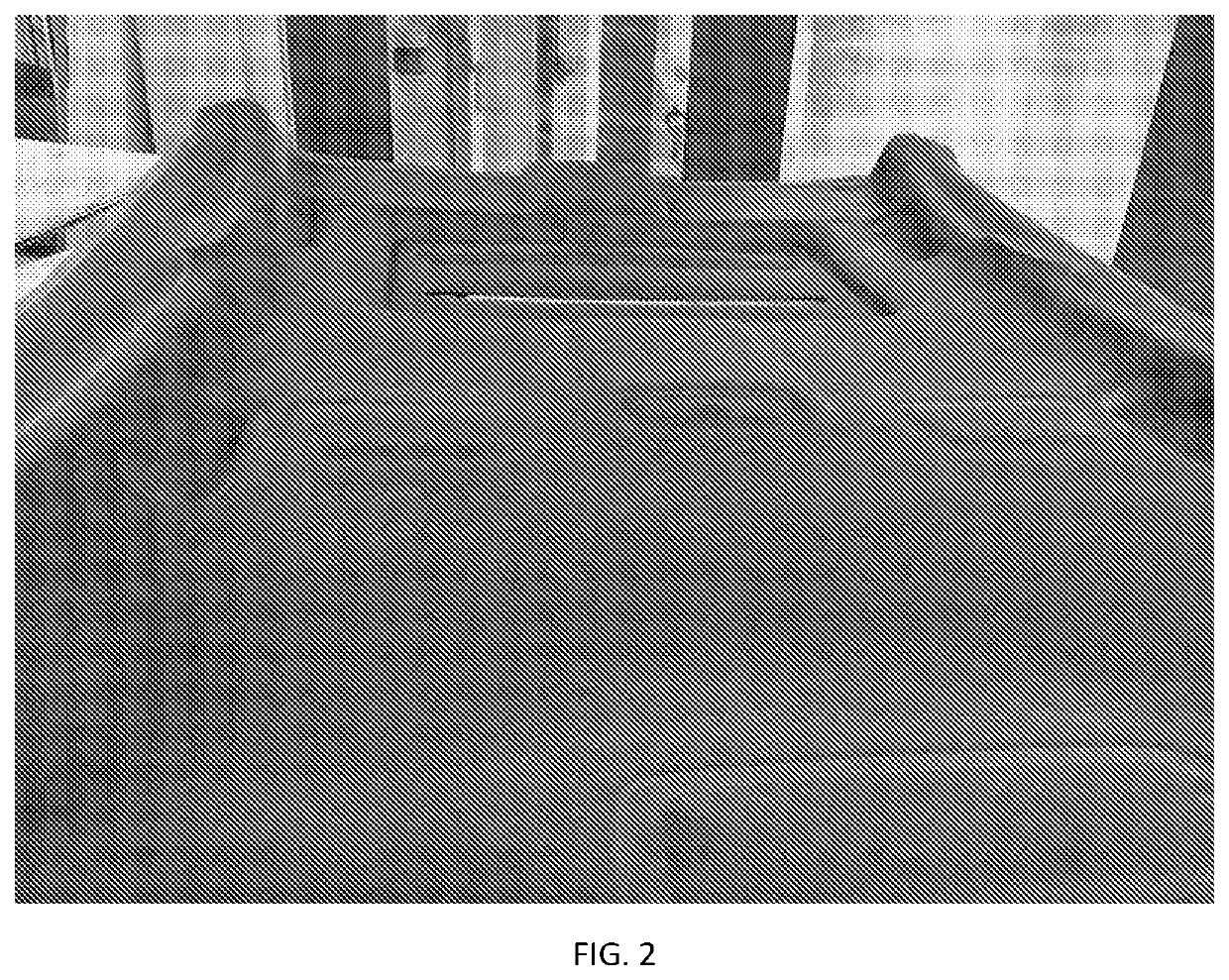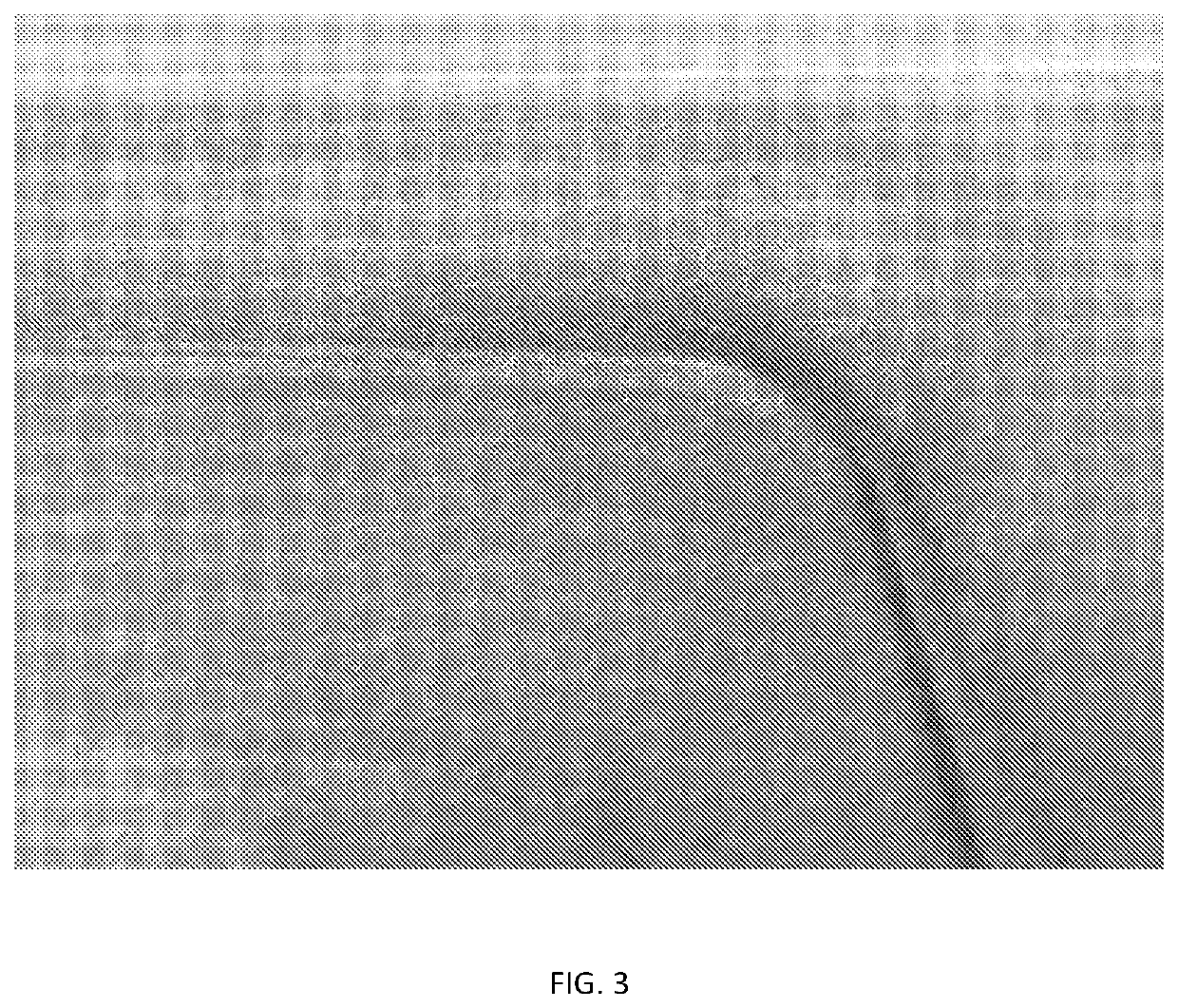Multifibrous multilayer composite material for applications in the automotive sector
a multi-layer composite material and automotive technology, applied in the field of multi-layer composite materials, can solve the problems of negative effect on its softness and formability, difficult identification of adhesives, and inability to obtain final composite products, and achieve the effects of multi-layer characteristics of elasticity, flexibility and formability
- Summary
- Abstract
- Description
- Claims
- Application Information
AI Technical Summary
Benefits of technology
Problems solved by technology
Method used
Image
Examples
example 1
[0102]A staple bicomponent fibre is prepared, said staple bicomponent fibre consisting of PET microfibres (0.14÷0.17 dtex) in a PS matrix and having the following characteristics:
[0103]1 Denier Count: 4.2 dtex
[0104]2 Length: 51 mm
[0105]3 Curls: about 4-5 / cm
[0106]In particular, the fibre consists of 57 parts by weight of PET and 43 parts by weight of PS. When observed in section, the fibre reveals the presence of 16 PET microfibres englobed in the PS matrix.
[0107]A felt is prepared with the bicomponent fibre by mechanical needle-punching, said felt having densities within the range of 0.150÷0.200 g / cm3 and unit weights in the range of 580÷630 g / m2.
[0108]The needle-punched felt is immersed in a 12% by weight aqueous solution of polyvinyl alcohol and then dried. The needle-punched felt thus treated is subsequently immersed in trichloroethylene until the polystyrene matrix of the fibres has completely dissolved. One then proceeds with drying the non-woven fabric thus formed, obtaining a...
example 2
[0115]A staple bicomponent fibre is prepared, said staple bicomponent fibre consisting of PET microfibres (0.14÷0.17 dtex) in a PS matrix and having the following characteristics:
[0116]1 Denier Count: 4.2 dtex
[0117]2 Length: 51 mm
[0118]3 Curls: about 4-5 / cm
[0119]In particular, the fibre consists of 57 parts by weight of PET and 43 parts by weight of PS. When observed in section, the fibre reveals the presence of 16 PET microfibres englobed in the PS matrix.
[0120]A felt is prepared with the bicomponent fibre by mechanical needle-punching, said felt having densities within the range of 0.150÷0.200 g / cm3 and unit weights in the range of 580÷630 g / m2.
[0121]The needle-punched felt is immersed in a 12% by weight aqueous solution of polyvinyl alcohol and then dried. The needle-punched felt thus treated is subsequently immersed in trichloroethylene until the polystyrene matrix of the fibres has completely dissolved. One then proceeds with drying the non-woven fabric thus formed, obtaining a...
example 3
[0128]A staple bicomponent fibre is prepared, said staple bicomponent fibre consisting of PET microfibres (0.14÷0.17 dtex) in a PS matrix and having the following characteristics:
[0129]1 Denier Count: 4.2 dtex
[0130]2 Length: 51 mm
[0131]3 Curls: about 4-5 / cm
[0132]In particular, the fibre consists of 57 parts by weight of PET and 43 parts by weight of PS. When observed in section, the fibre reveals the presence of 16 PET microfibres englobed in the PS matrix.
[0133]A felt is prepared with the bicomponent fibre by mechanical needle-punching, said felt having densities within the range of 0.150÷0.200 g / cm3 and unit weights in the range of 580÷630 g / m2.
[0134]The needle-punched felt is immersed in a 12% by weight aqueous solution of polyvinyl alcohol and then dried. The needle-punched felt thus treated is subsequently immersed in trichloroethylene until the polystyrene matrix of the fibres has completely dissolved. One then proceeds with drying the non-woven fabric thus formed, obtaining a...
PUM
| Property | Measurement | Unit |
|---|---|---|
| thickness | aaaaa | aaaaa |
| thickness | aaaaa | aaaaa |
| time | aaaaa | aaaaa |
Abstract
Description
Claims
Application Information
 Login to View More
Login to View More - R&D
- Intellectual Property
- Life Sciences
- Materials
- Tech Scout
- Unparalleled Data Quality
- Higher Quality Content
- 60% Fewer Hallucinations
Browse by: Latest US Patents, China's latest patents, Technical Efficacy Thesaurus, Application Domain, Technology Topic, Popular Technical Reports.
© 2025 PatSnap. All rights reserved.Legal|Privacy policy|Modern Slavery Act Transparency Statement|Sitemap|About US| Contact US: help@patsnap.com



